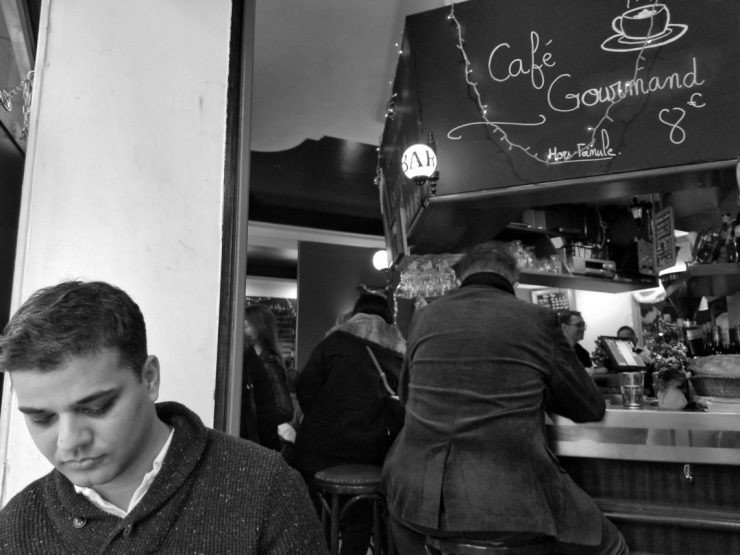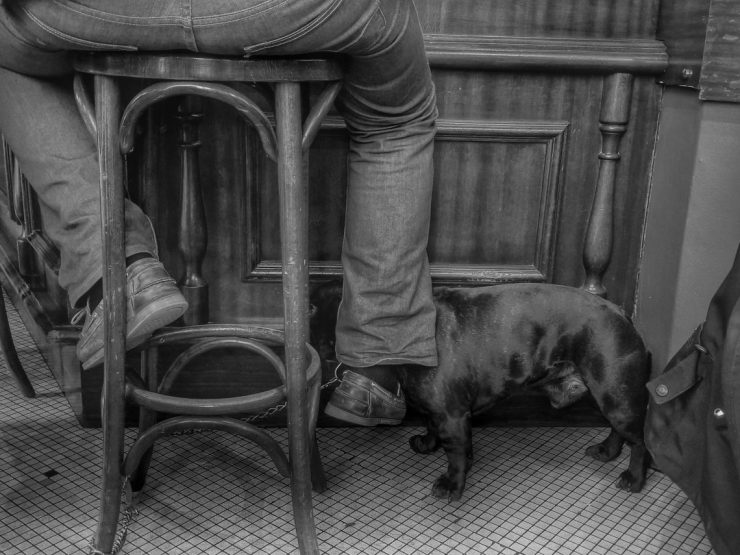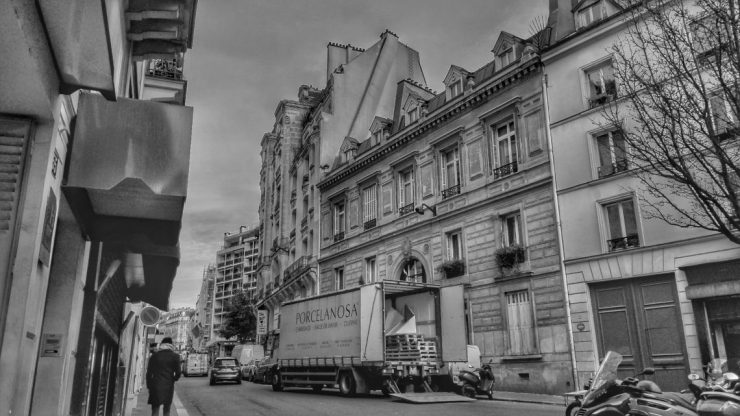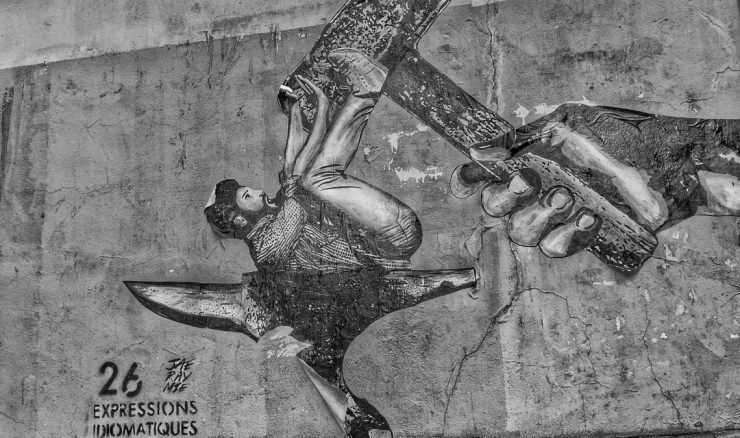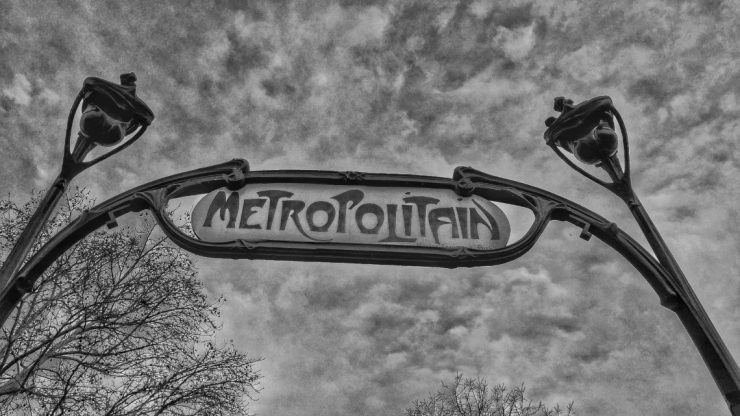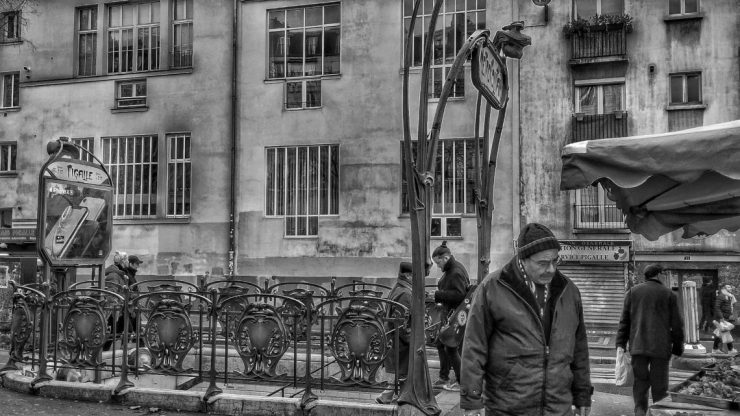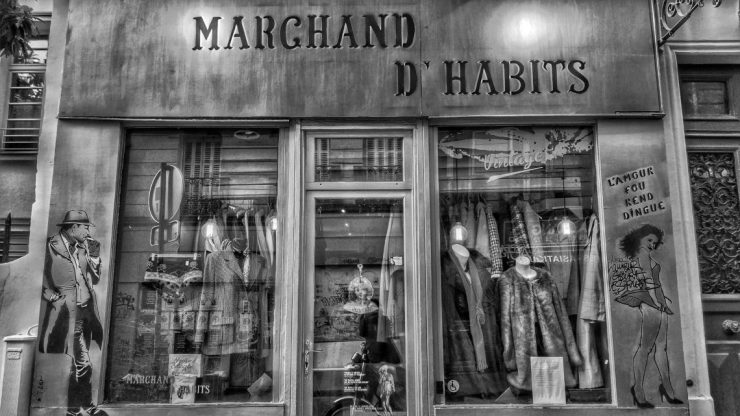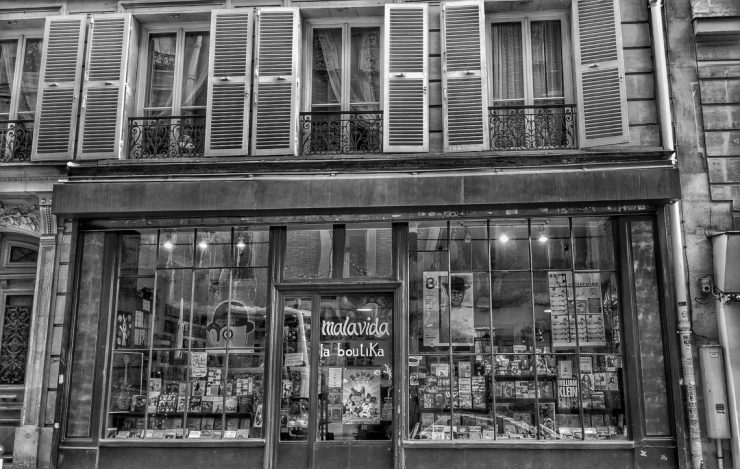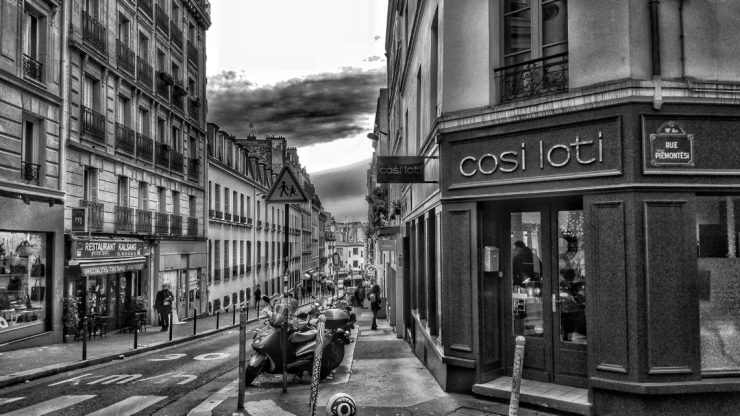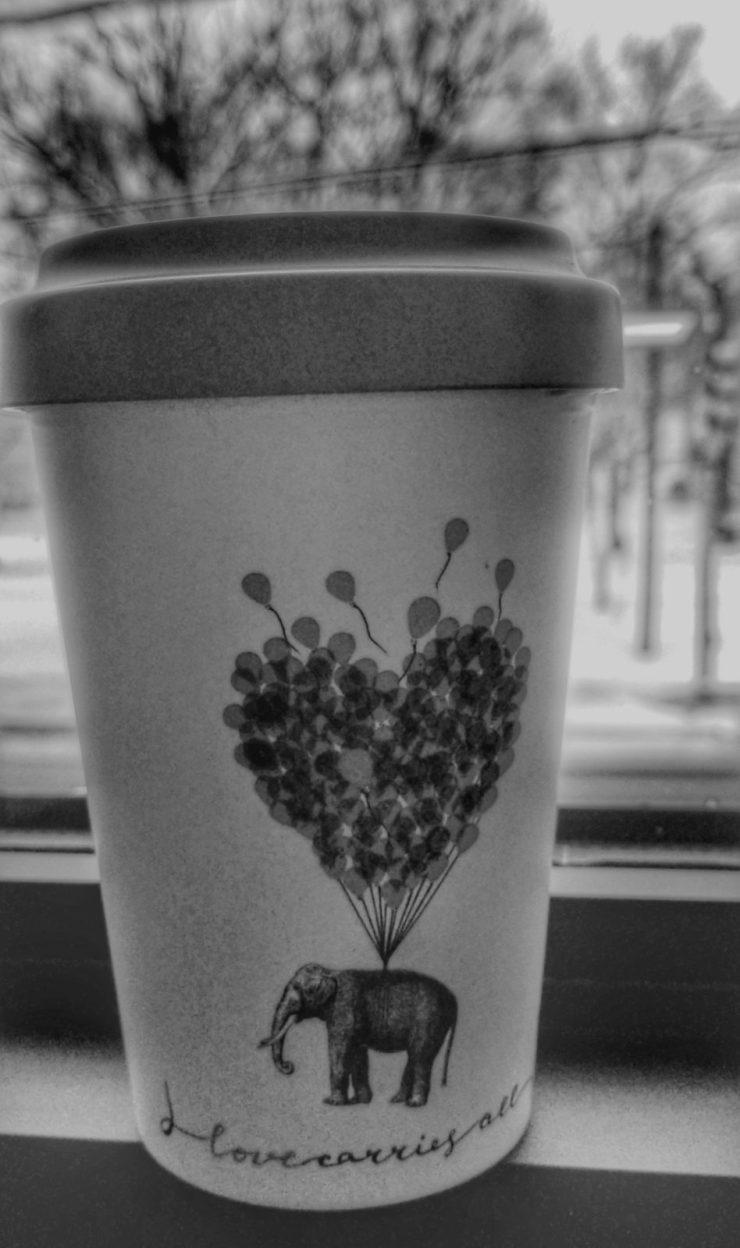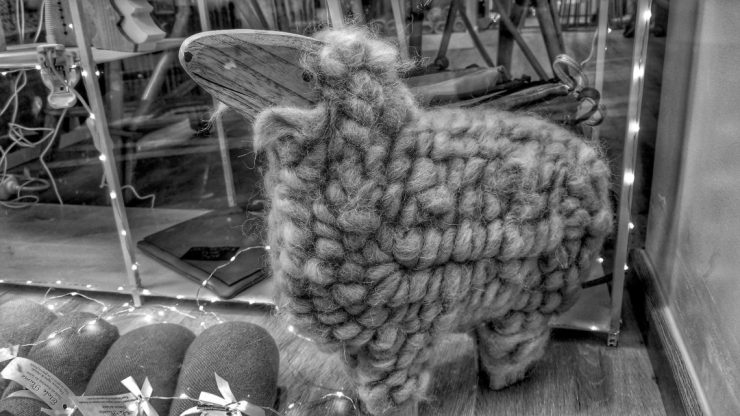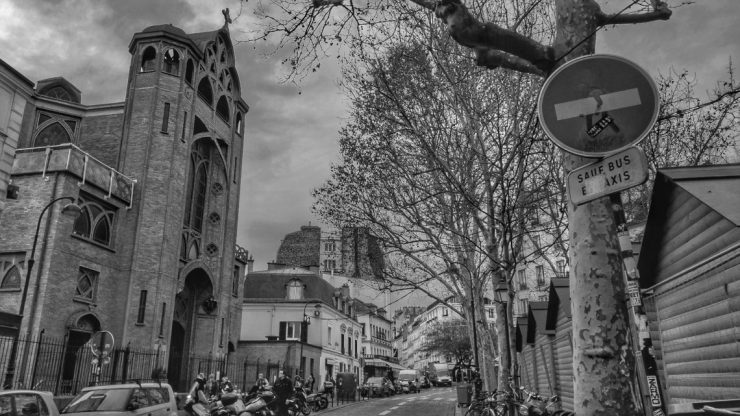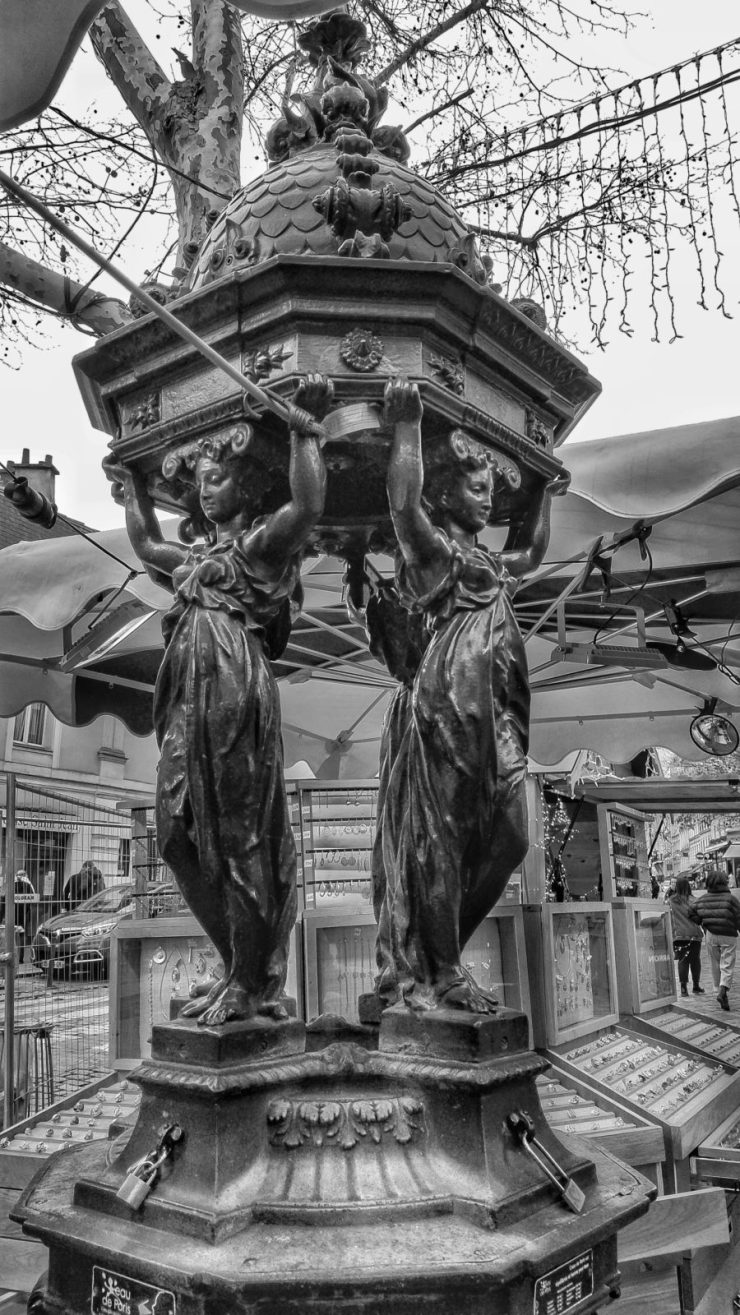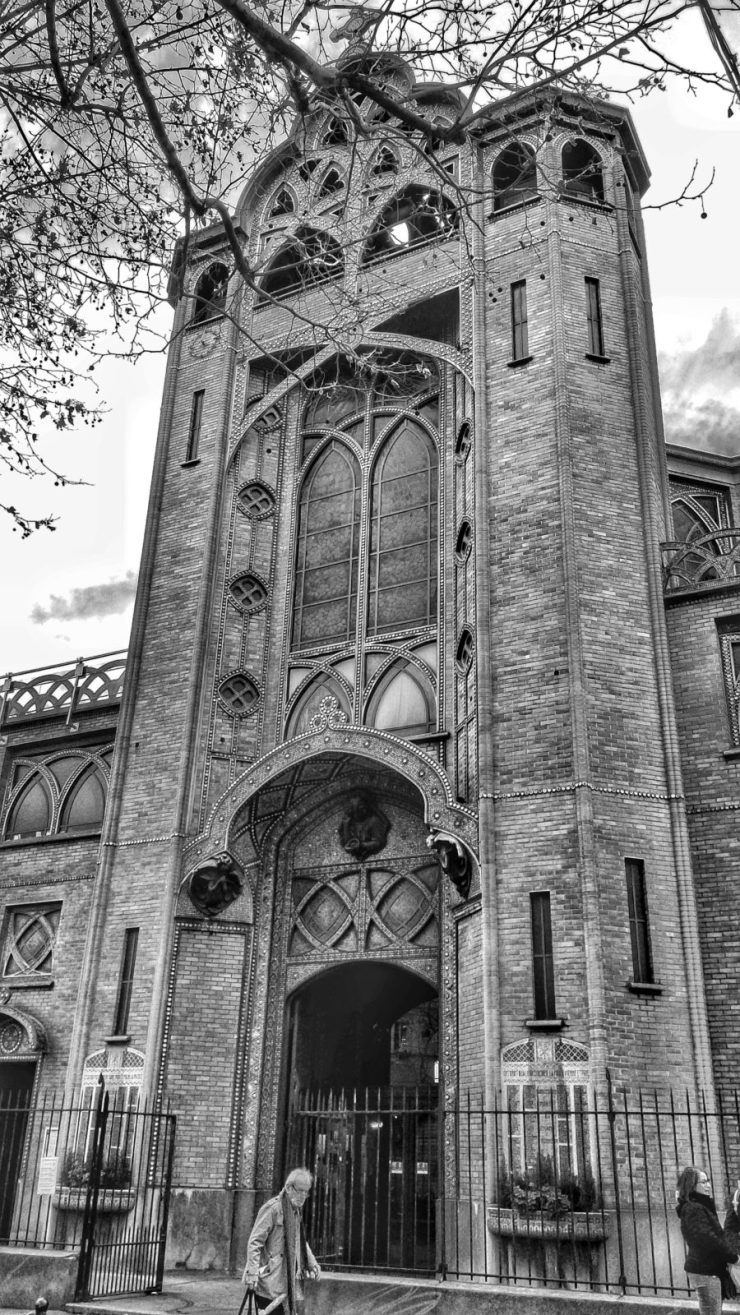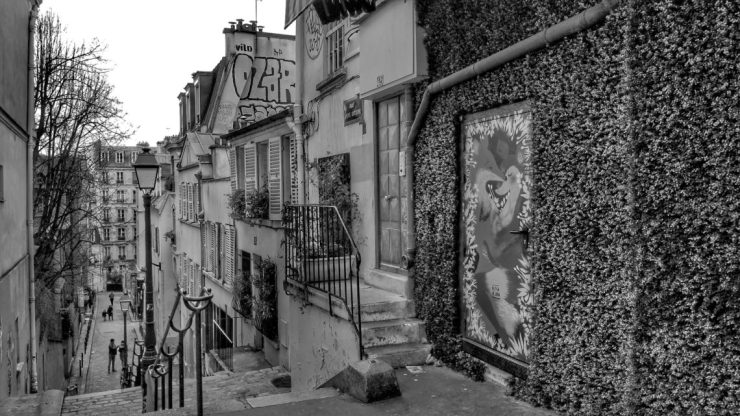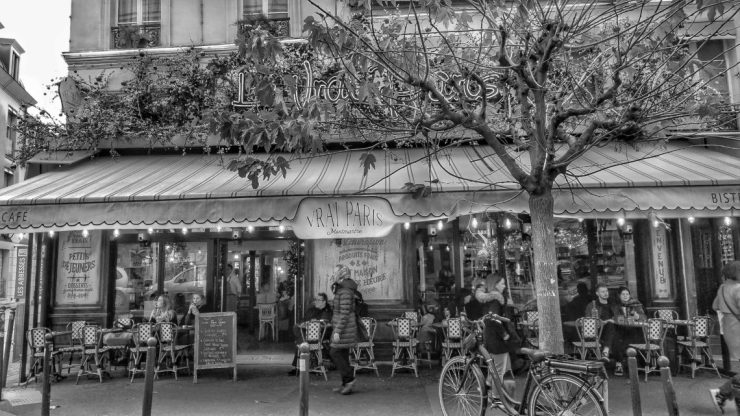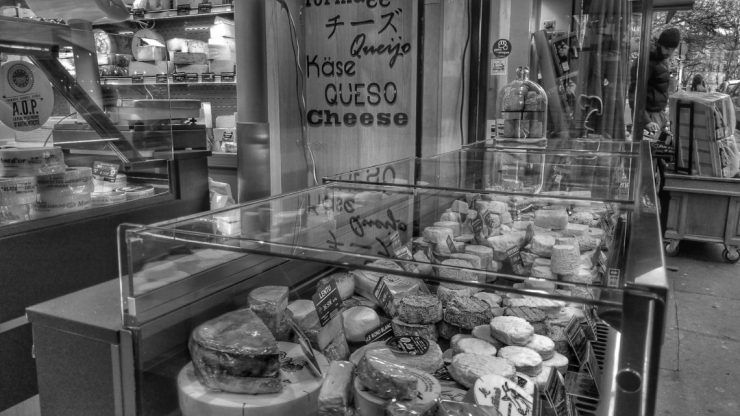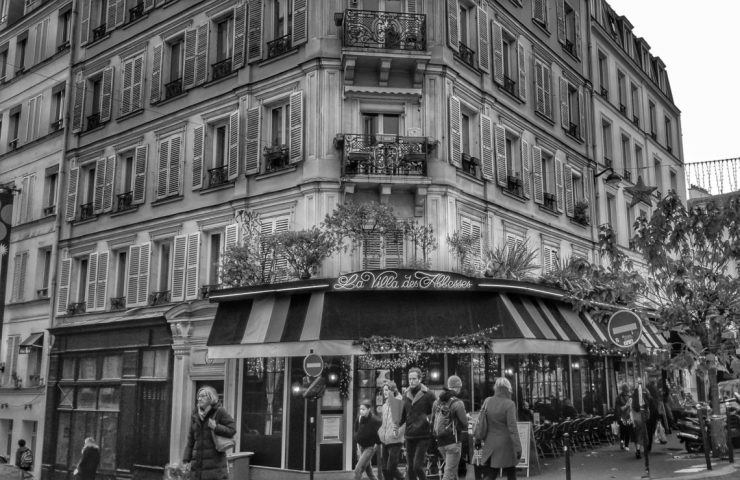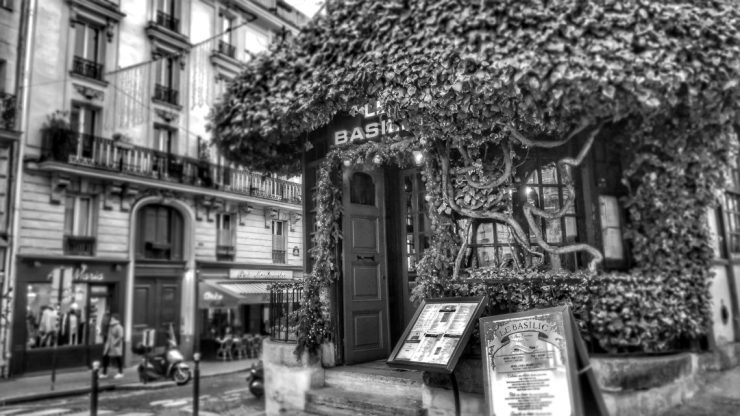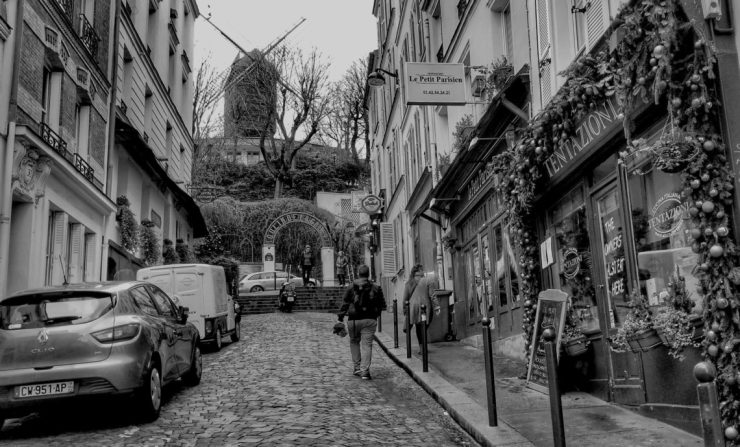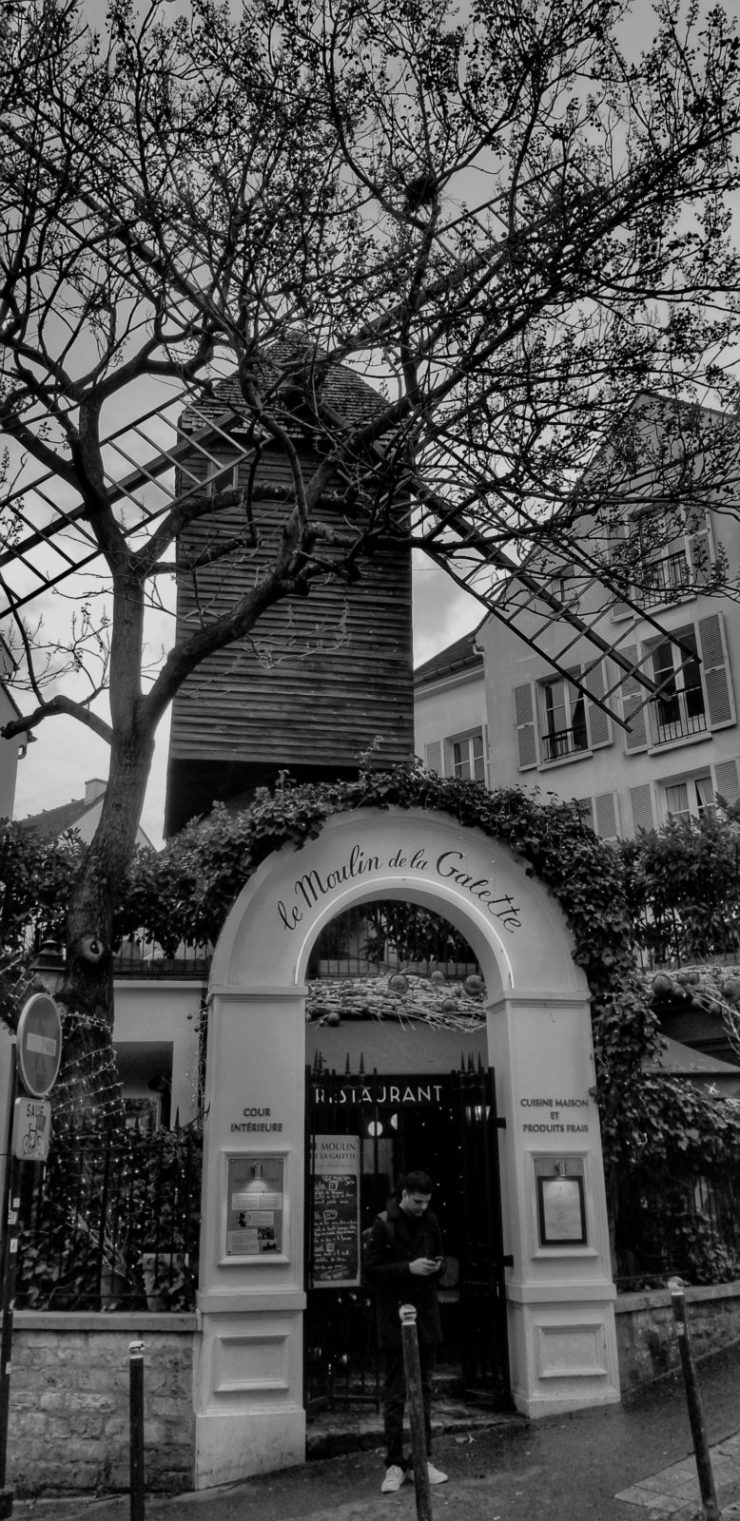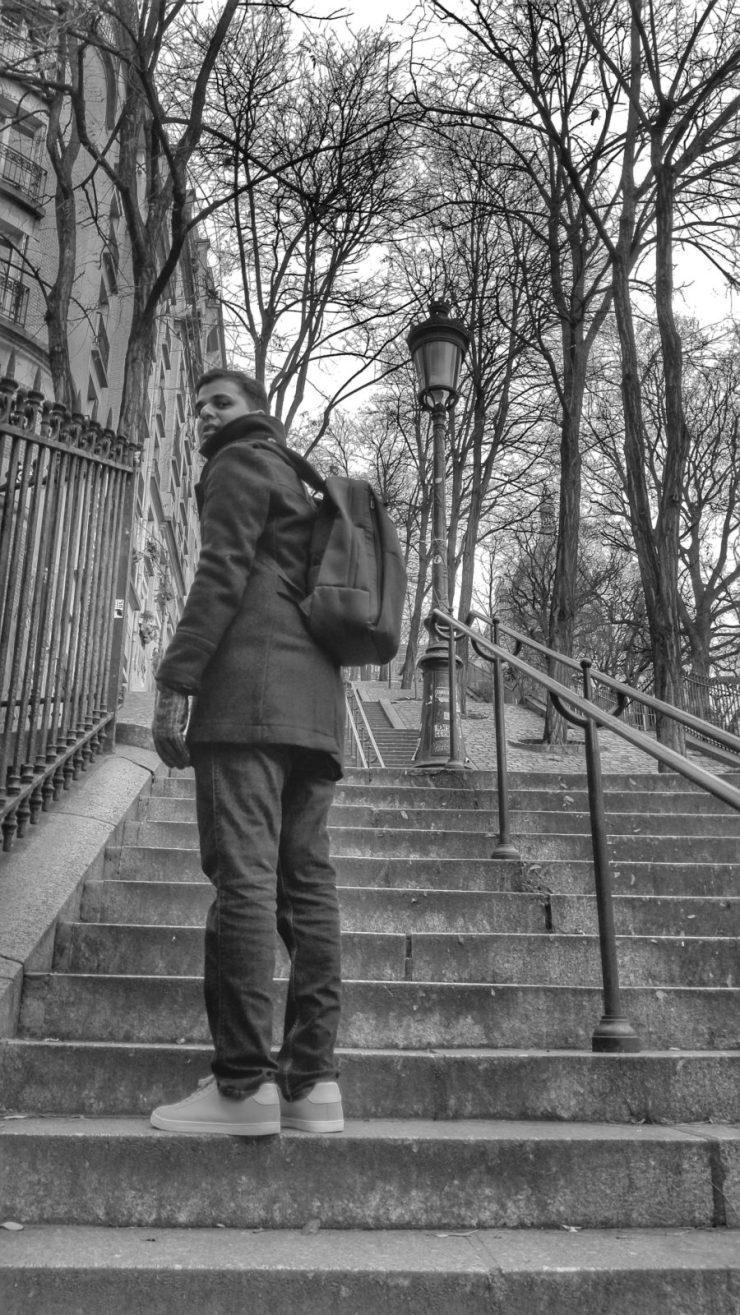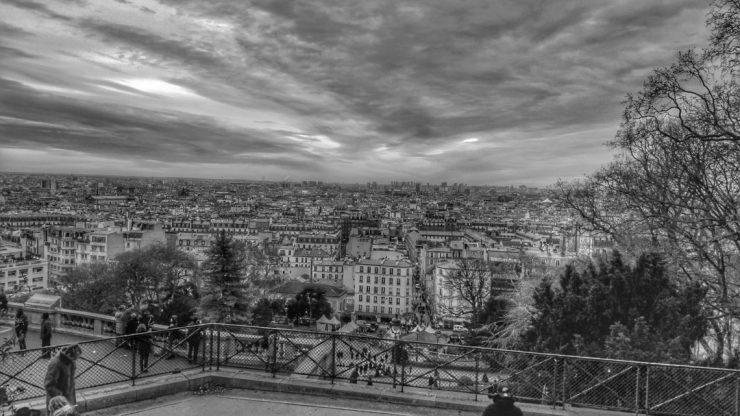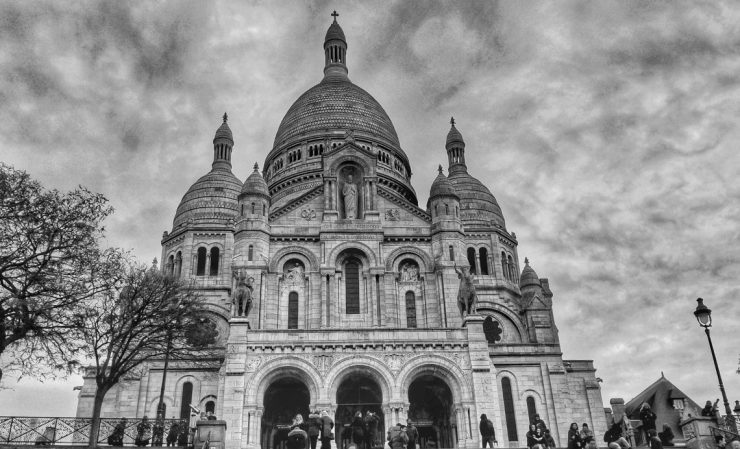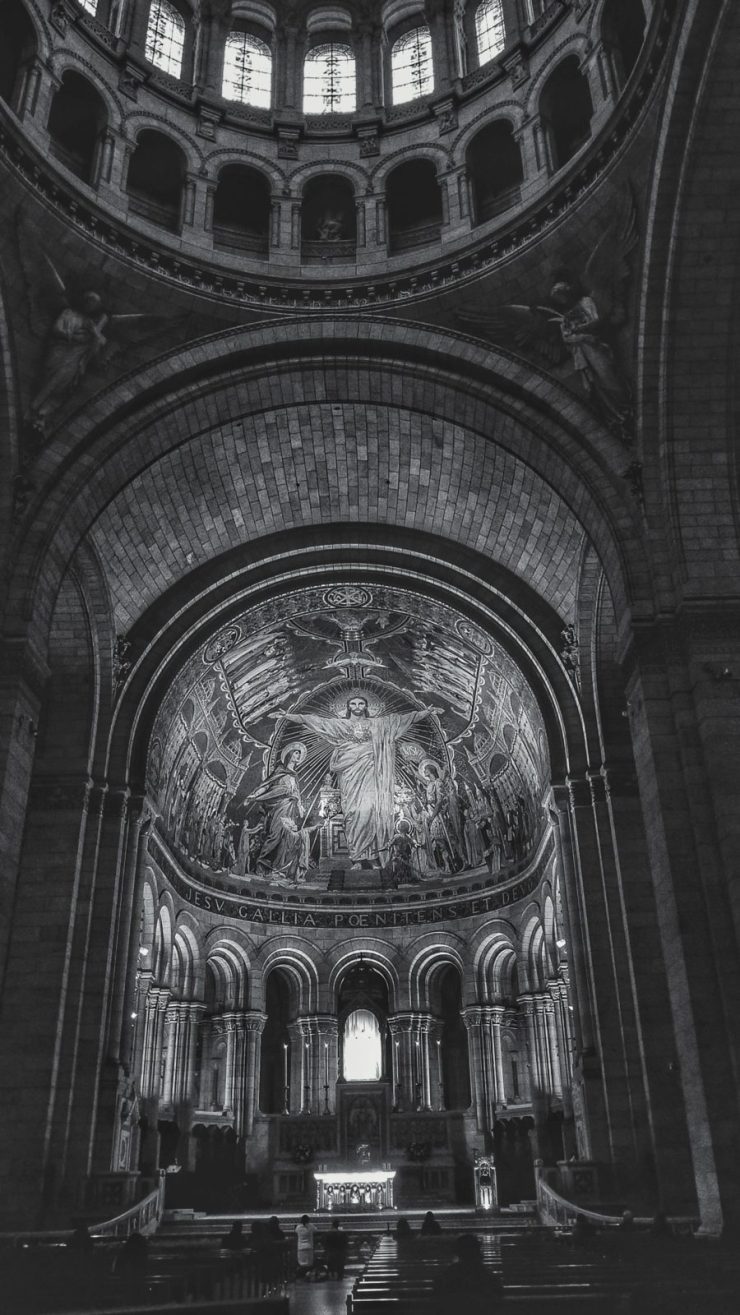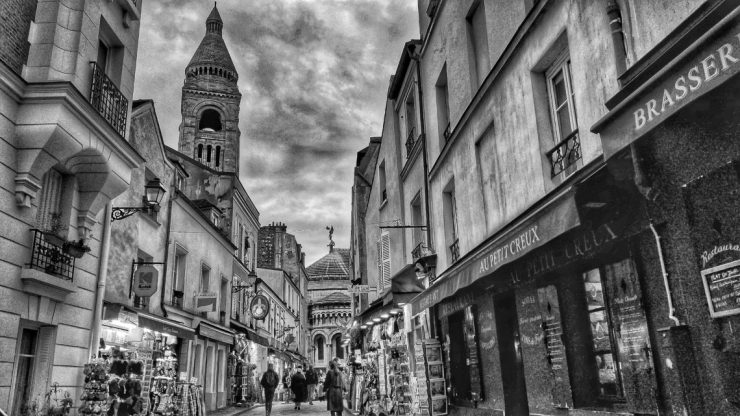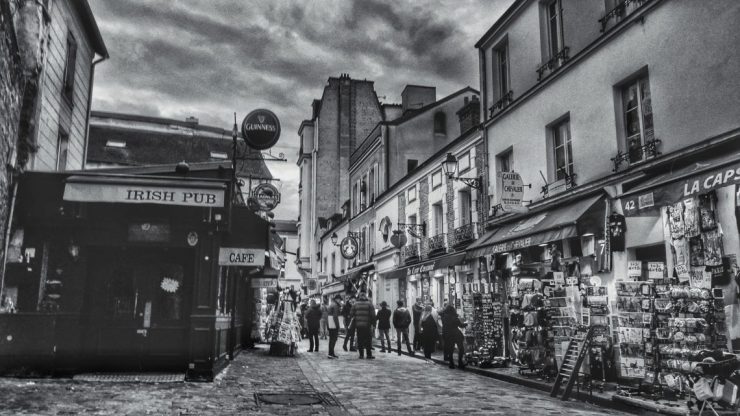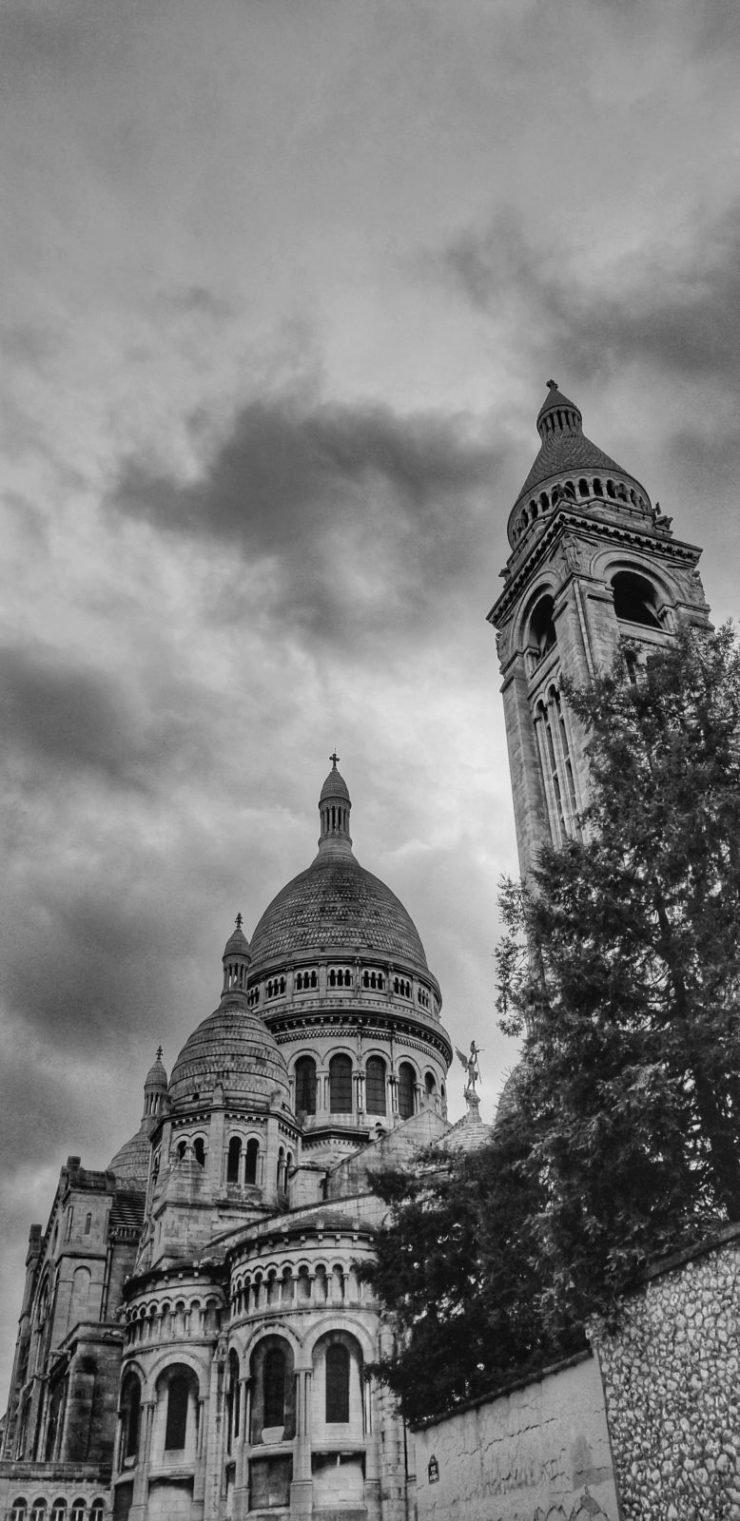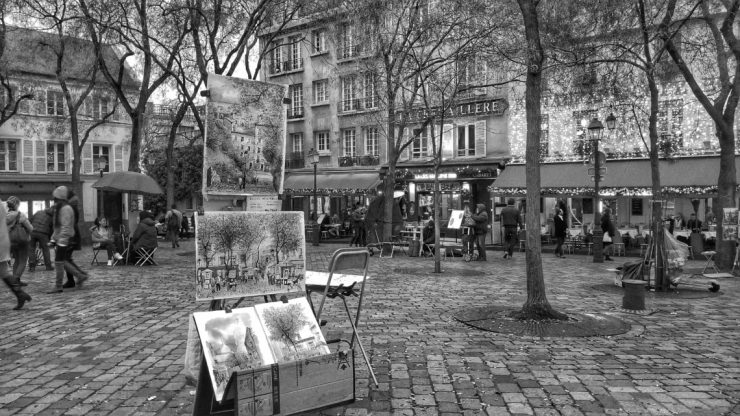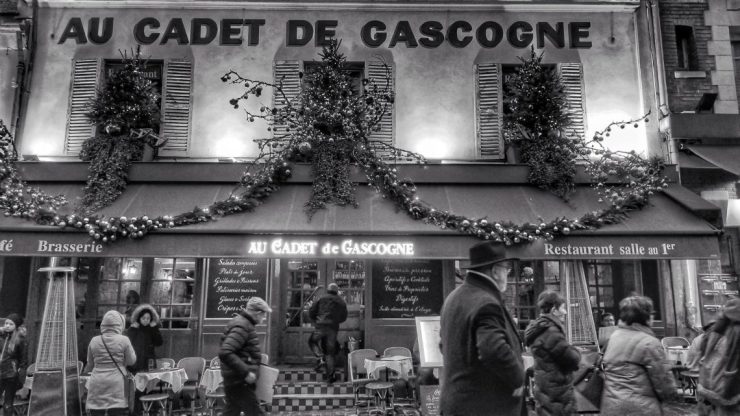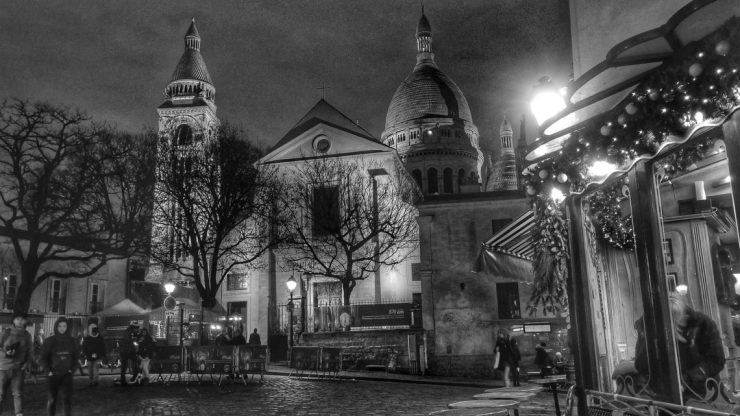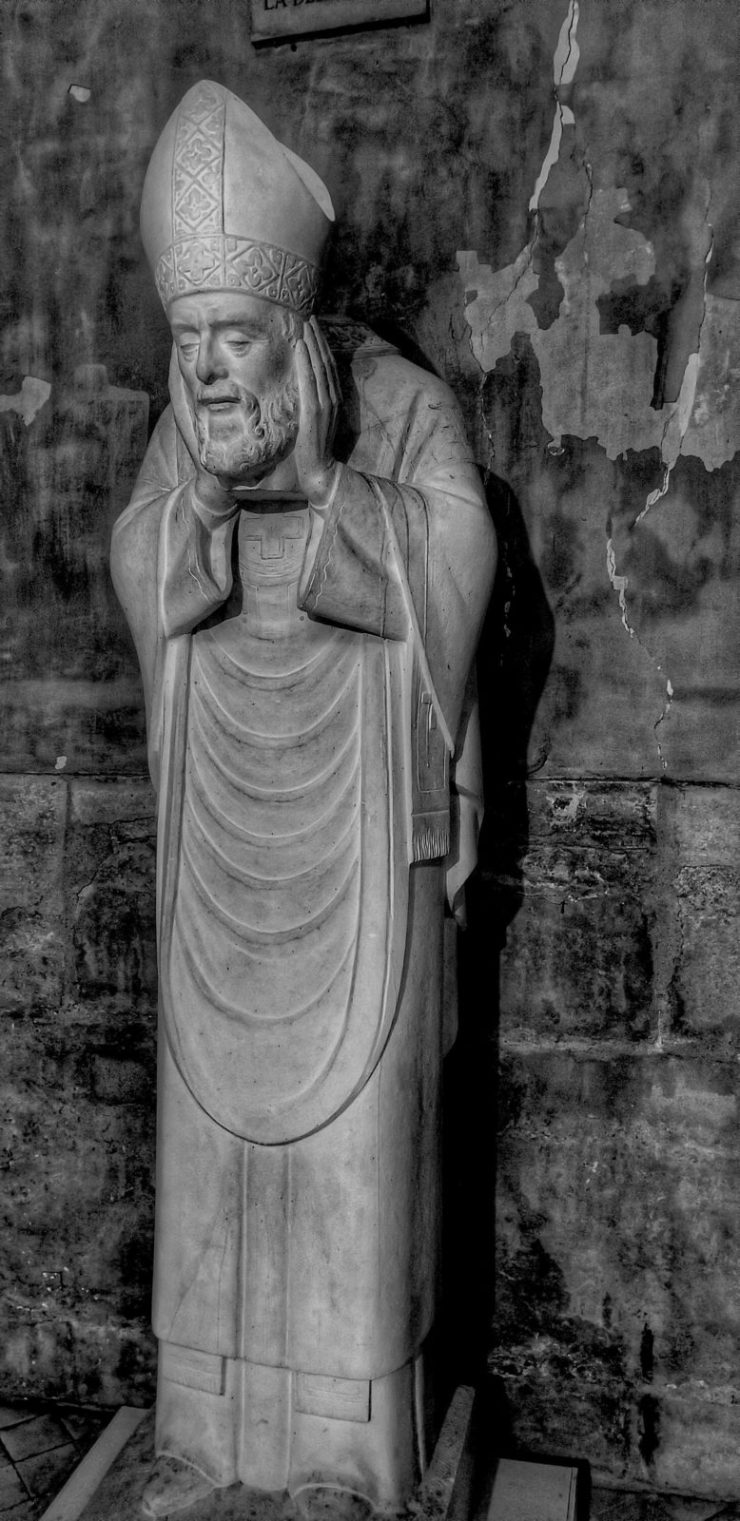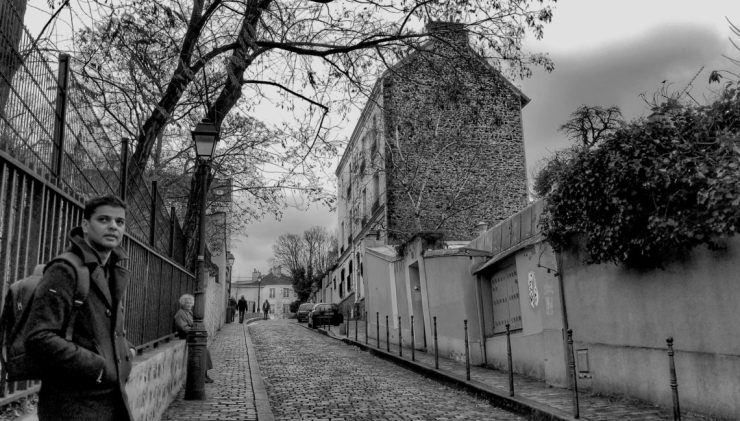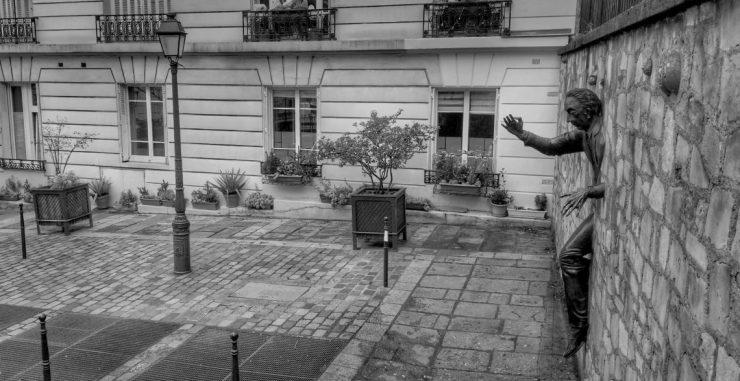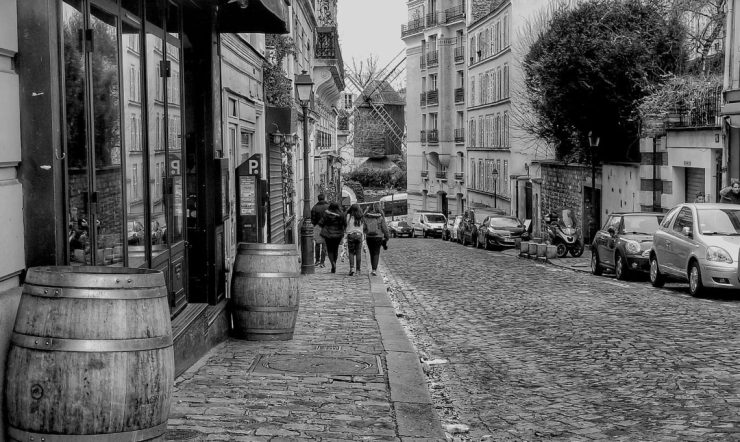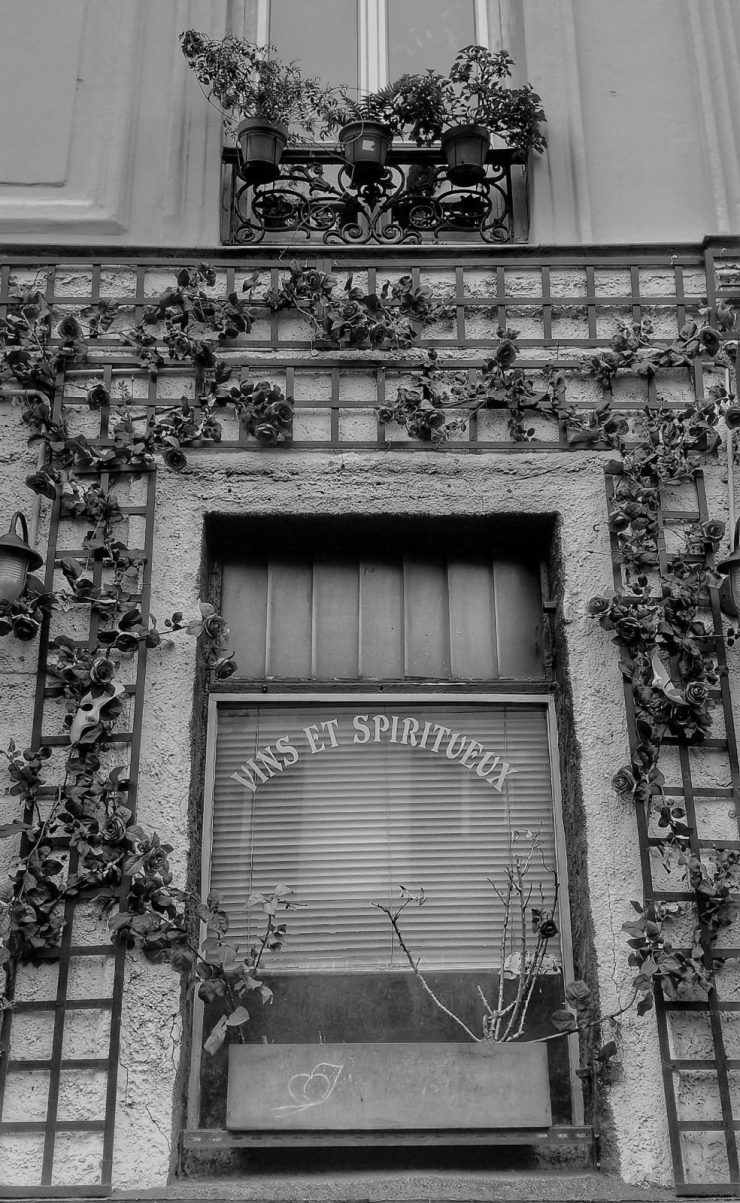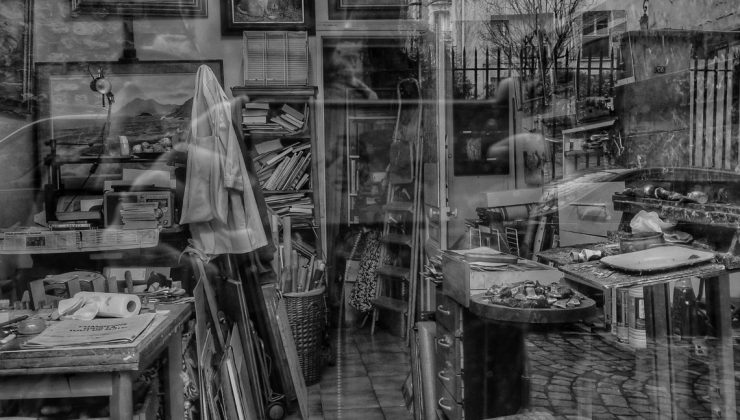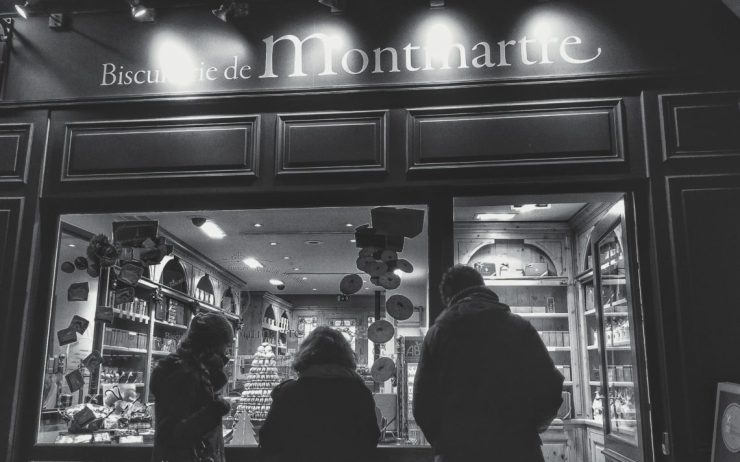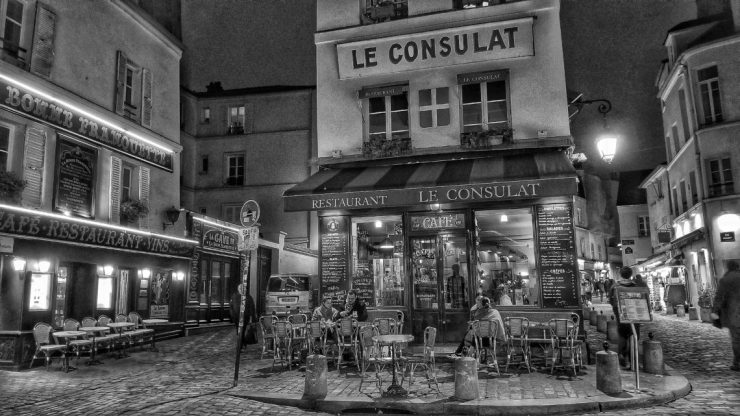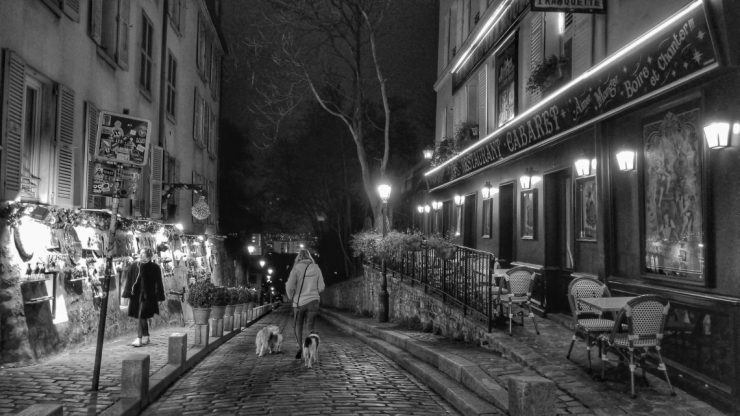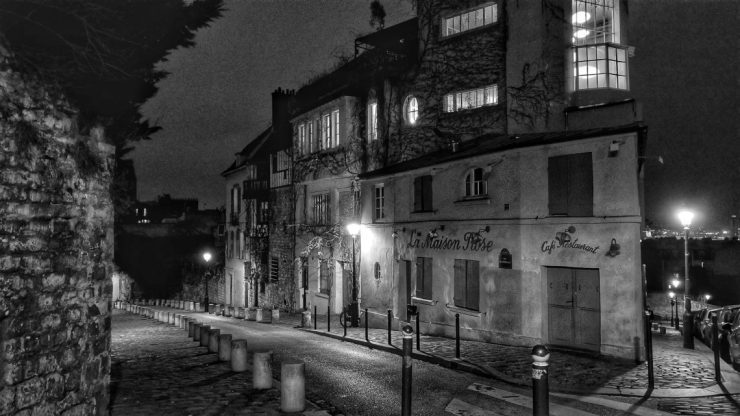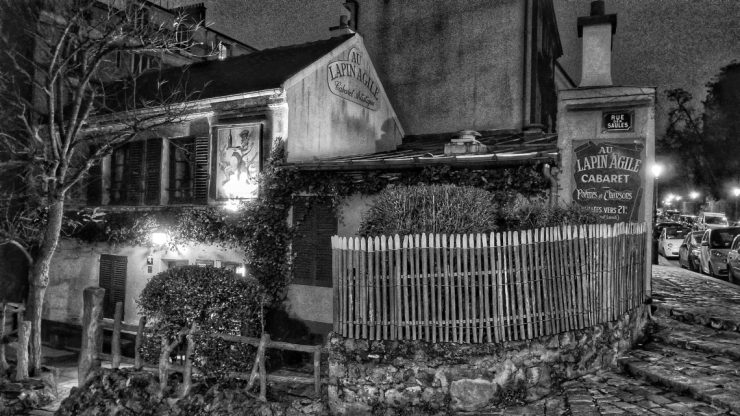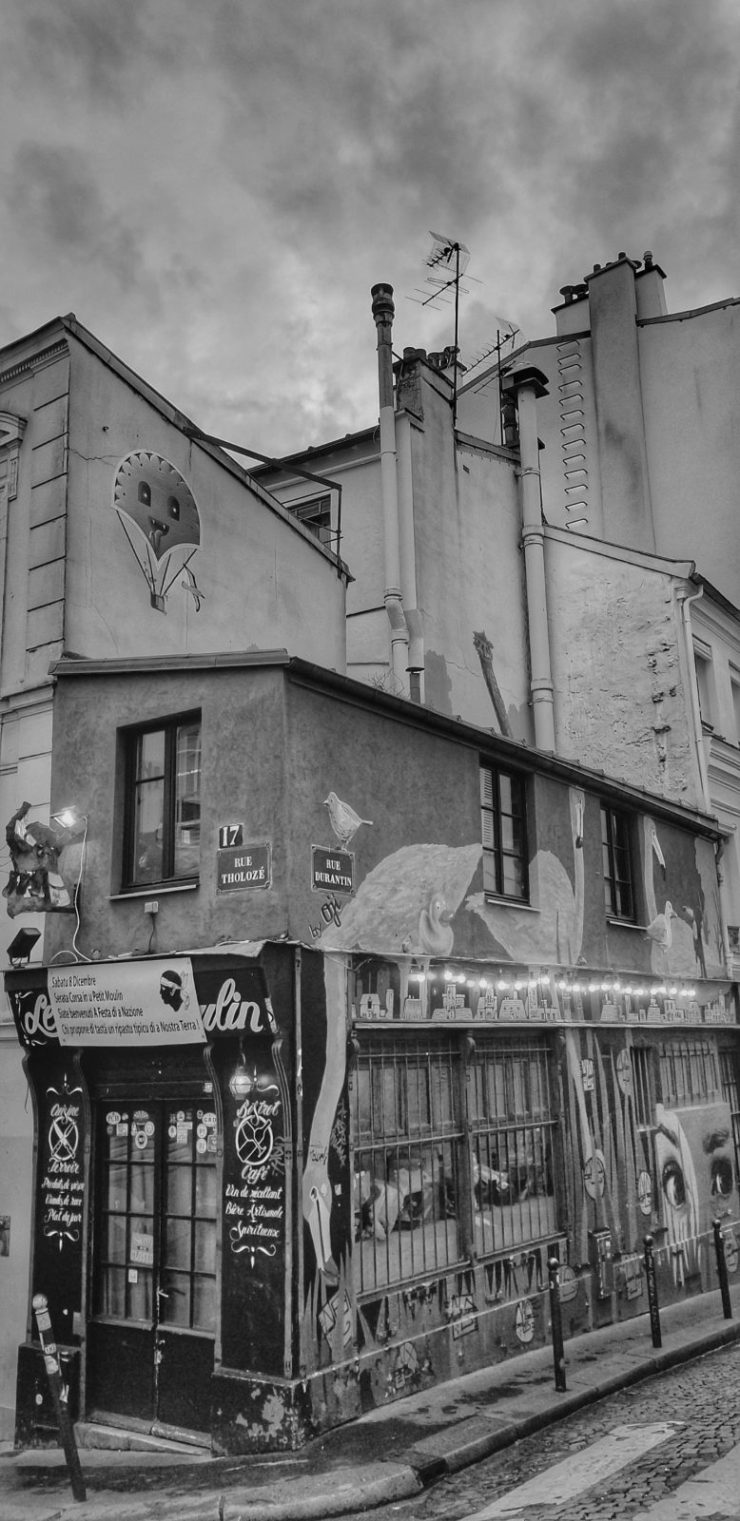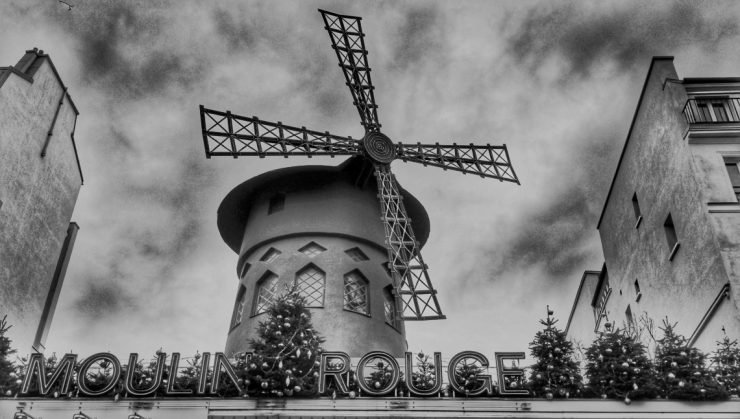In Paris, I was part of Bresson’s world. Only here, I was the one behind the camera, a silent witness to the flow of people on the streets, making way for the natural synthesis of scenes to happen to the camera. Each corner I turned around, there was a frame lying in wait. On the streets of Paris, as you know, the frames are numerous. You are hard-pressed to let go of any. Such as on the noon before we walked to Montmartre – when we sat in a tiny, packed café to a meal of succulent roast chicken, fries and red wine.
At the café’s counter, a man sat perched upon a barstool, a French Bulldog in attendance. Now, as all examples of his species go, this bulldog was undeniably ugly. Clownish bat ears, bow legs, flat face, bulging eyes. But what he had in spades was determination. He must have a bite off the table behind him, just laid with food. Naturally, he went and stood, a pugnacious little fellow, at the foot of the table. The man eating at that table turned around to let his displeasure be obvious to the bulldog’s human who cast a sheepish smile and muttered, ‘Jack non, non’ in reproval. He tightened Jack’s leash around the leg of his barstool. But this Jack, he was a trooper. He wormed his way back to the table a few times, till his man friend used his foot to wedge Jack’s face against the counter. Picture Jack then. A sorrowful expression on his face, the least he could demand was discretion.
I clicked a photo of him accordingly, discreetly, while imparting sagacious words to this oddball, ‘Life never came with a promise to be fair, Jack’.
In the lengthening shadows of that cold and blustery noon, we carried on to Montmartre, making pit stops at small boutiques along cobbled streets. The rigours of daily life in the metro unfolded along us. Men loaded and unloaded vans.
Montmartre turned out to be divested of the summer crowds. It was easier to lend your mind to the reason it is called ‘the Mount of the Martyr’. The martyr in question is Saint Denis, the first bishop of Paris. This patron saint was decapitated by the Romans because, much to the alarm of the Roman priests, he was gaining followers rapidly. When I saw his statue, it seemed like he had his hands over his ears, but actually the man was holding his own head. The legend is that he was beheaded by a bored Roman soldier. But the saint did not give up. He picked up his head and continued walking to the top of the hill. Eventually, he dropped dead and his head rolled till it reached a spot where the Basilica of Saint Denis was built.
The neighbourhood of Montmartre looks decidedly posh with its old churches and chapels, a line-up of chic bistros and pavement drinkers, boulangeries like Alexine where the cheese & nut breads, not to forget the tarts, are guaranteed to drive you into a frenzy.
You would almost forget that this was the Paris of broke artists; of walled gardens; of poorly-lit garretts cluttered with easels, redolent of turpentine and paint; of artists’ communes frequented Picasso, Matisse, Modigliani; of drunken brawls, idealistic talk and angst-ridden thoughts spewed at guinguettes (outdoor taverns-cum–dance halls); slow waltzes to the tune of the accordion. And gradually the paths drifting down to the louche neighbourhood of Pigalle which the surrealist André Breton described as “diamantiferous mud”. A notorious collection of seedy nightclubs, erotic museum, porn theatres offering peep shows and what not, to the iconic cabaret of the Moulin Rouge.
If you would come with me, we could walk the leafy, loopy alleys of the 18th arrondissement together, skim through street art, take breaks at intimate little cafés, and break the silence once in a while to wonder about the Montmartre that has been left behind.
